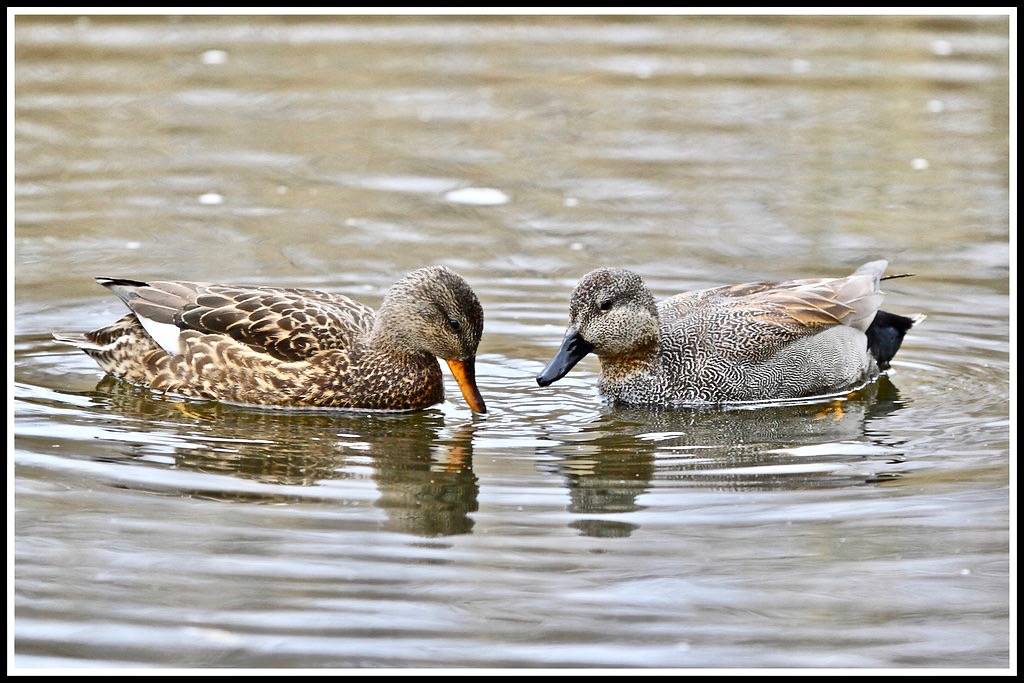Gadwall
Gadwalls have been observed in small numbers at Salter Grove during the colder months of the year from November through April. They can be easily missed when viewed at a distance from the causeway or Marsh Trail because their grayish-brown plumage blends into the similarly colored dry vegetation of the wintry shoreline.
A female Gadwall might be mistaken for a female Mallard but the Gadwall has an orange-edged beak, a white speculum, and a white belly. The male Gadwall has a subdued grayish-brown plumage but a conspicuous white speculum and a black rear end. Its feathers have a beautifully intricate pattern but does not help in quick identification because it is only visible close up.
It is a dabbler that upends itself rather than dive to reach the leaves and seeds of favored aquatic vegetation. Gadwalls are often found feeding on aquatic plants in the company of American Wigeons and American coots in migration or on the wintering grounds. It is not above robbing companions that surface with food. However, it has not been observed to rob the much larger Mute Swan, the most numerous dabbler of all at Salter Grove.
As in many other bird species that feed primarily on plants, the Gadwall hen supplements its diet with small invertebrates like mollusks and insects during the breeding season. This extra pulse of animal protein is essential because not only does she lay a large number of eggs, she also uses her own down to line the nest.
Gadwalls breed across the Palearctic as well as in central North America. They have been found to nest in tundra, boreal forests of the far north and even in stock ponds as long as there is suitable aquatic vegetation for food and shelter. In recent decades, the conservation of wetlands in the Great Plains and Canadian prairies has increased its breeding success. Individuals that breed in North America winter in the southern two-thirds of the United States, and as far south as Central America.
Pair formation for the following breeding season occurs during fall migration and would explain the displays and complex interactions observed in small flocks of post-breeding individuals while they are at Salter Grove.

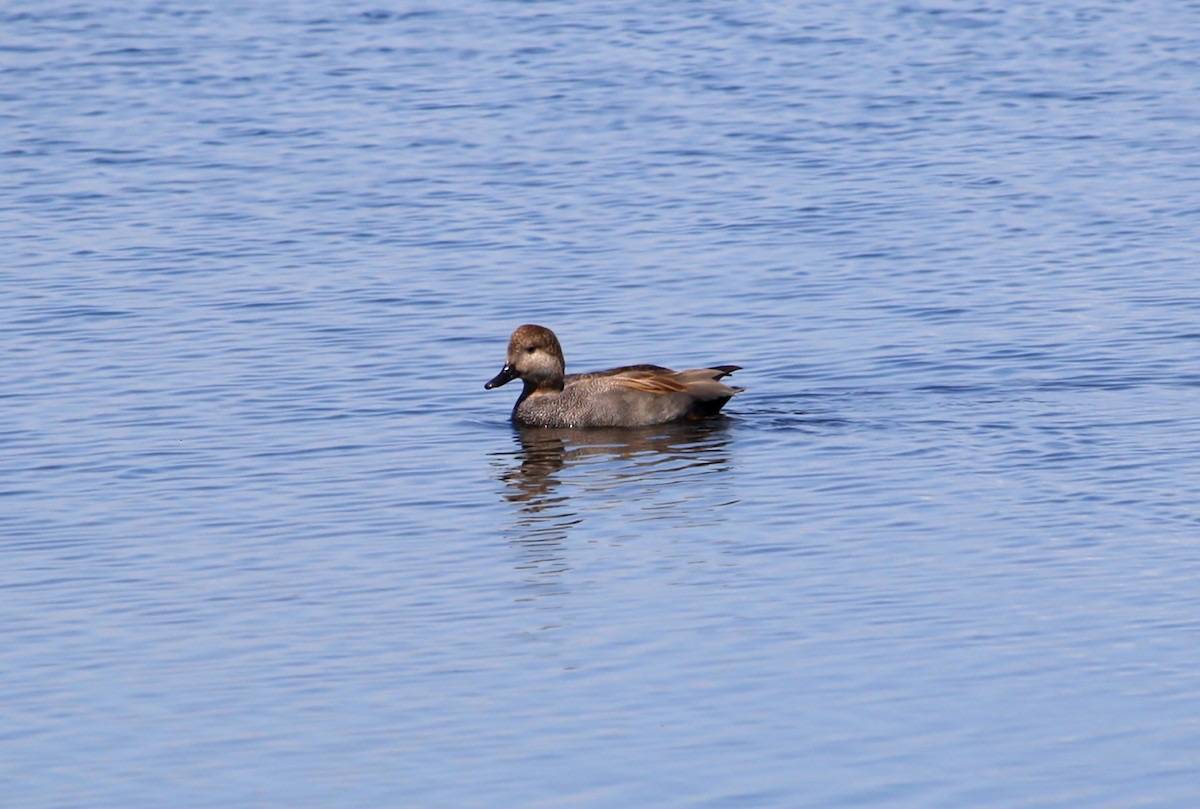
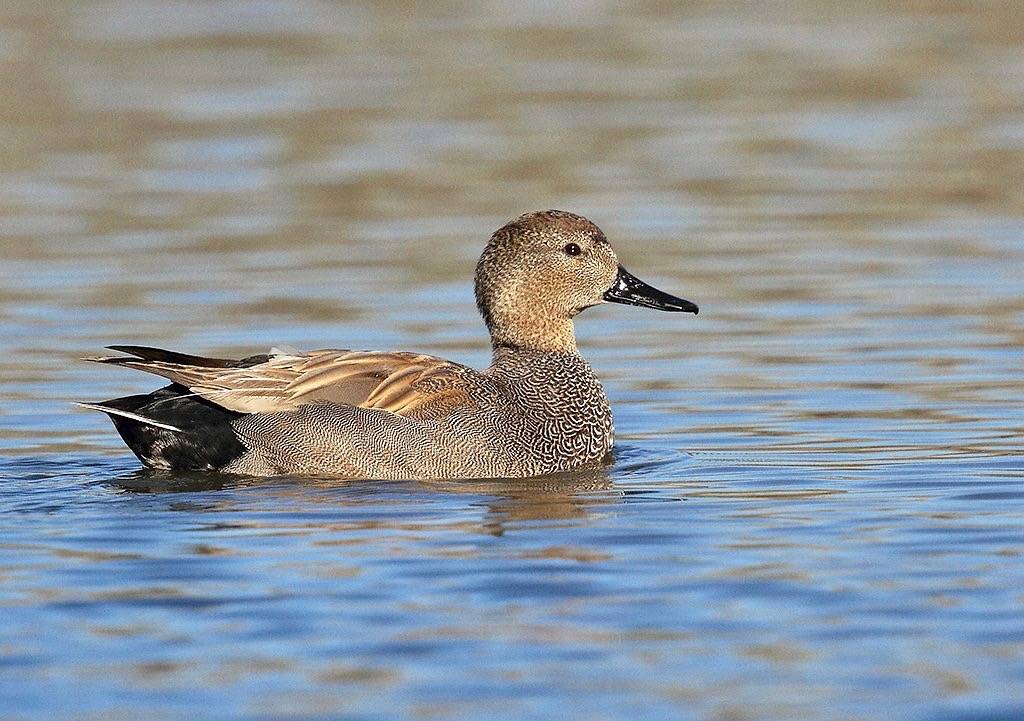
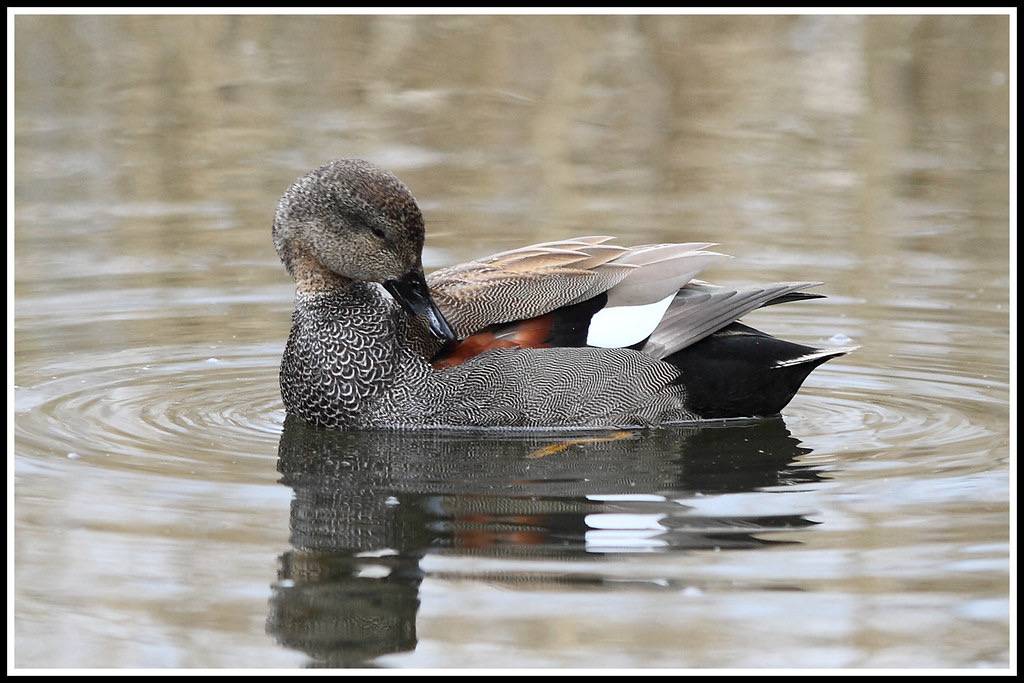
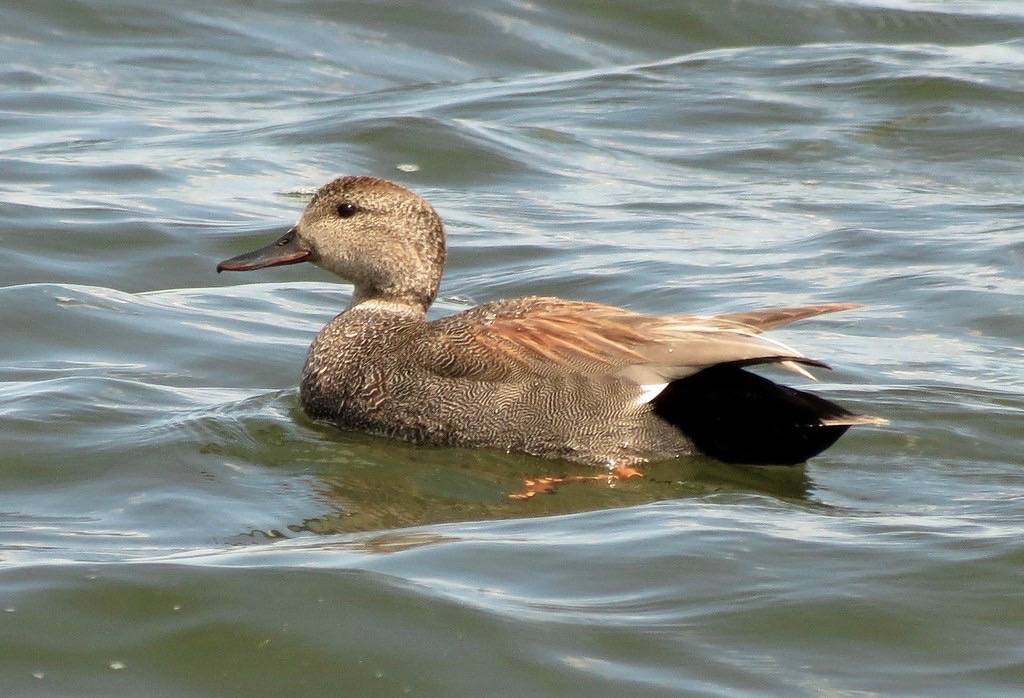
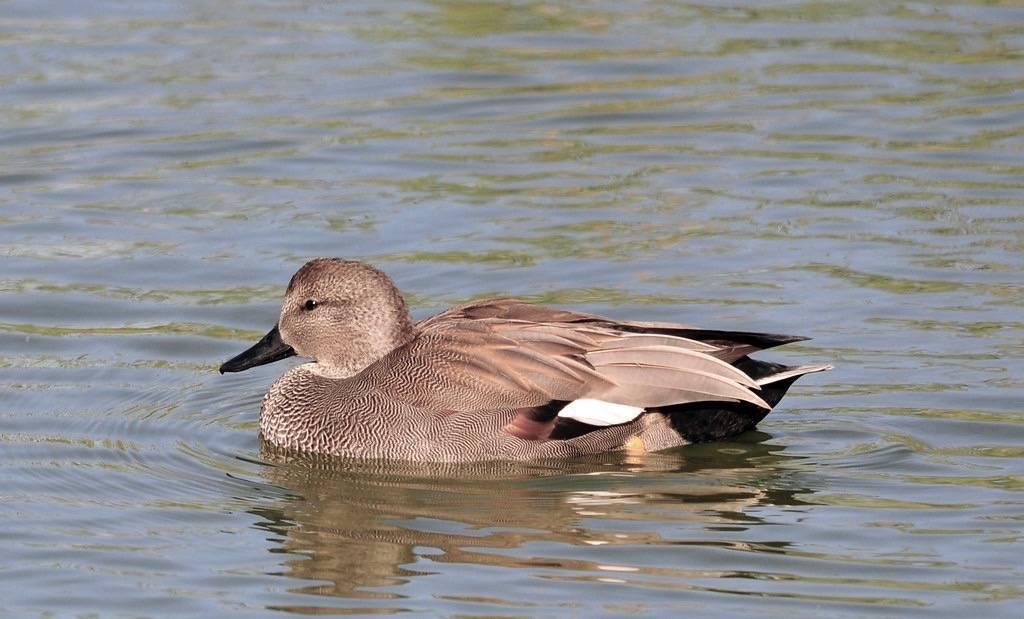
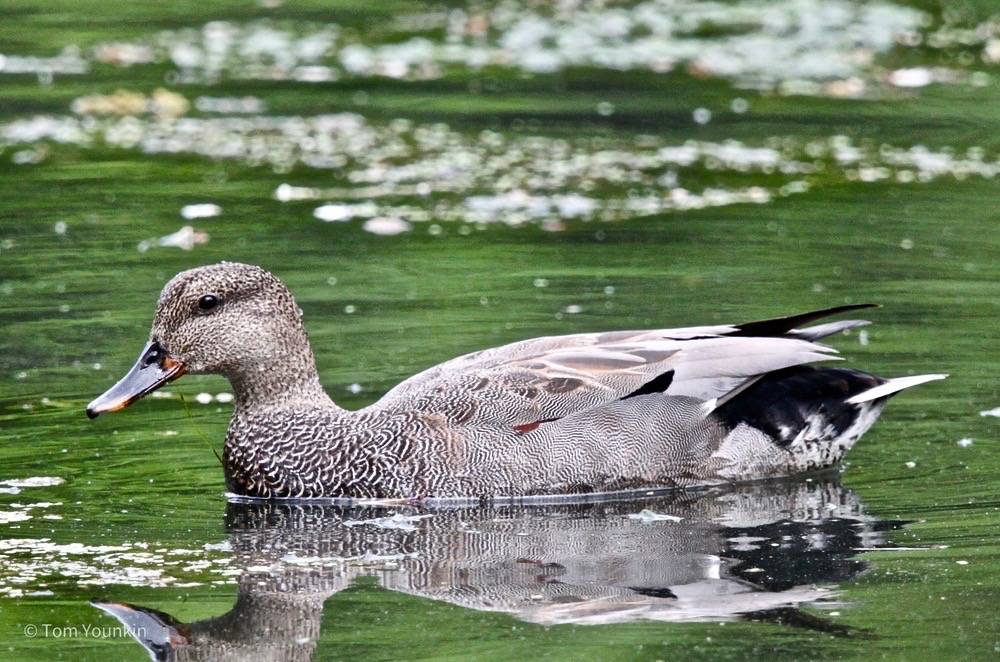
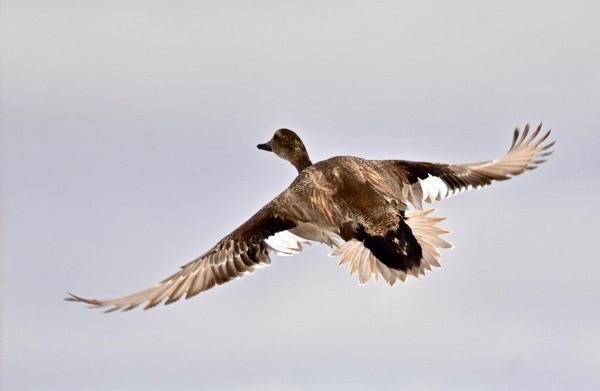
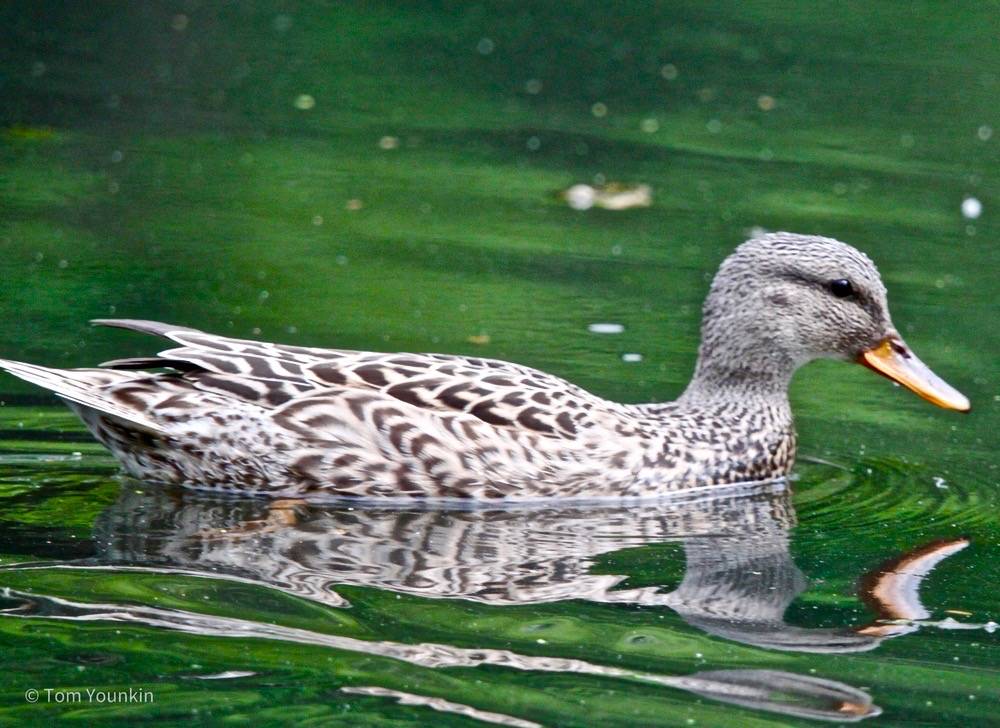
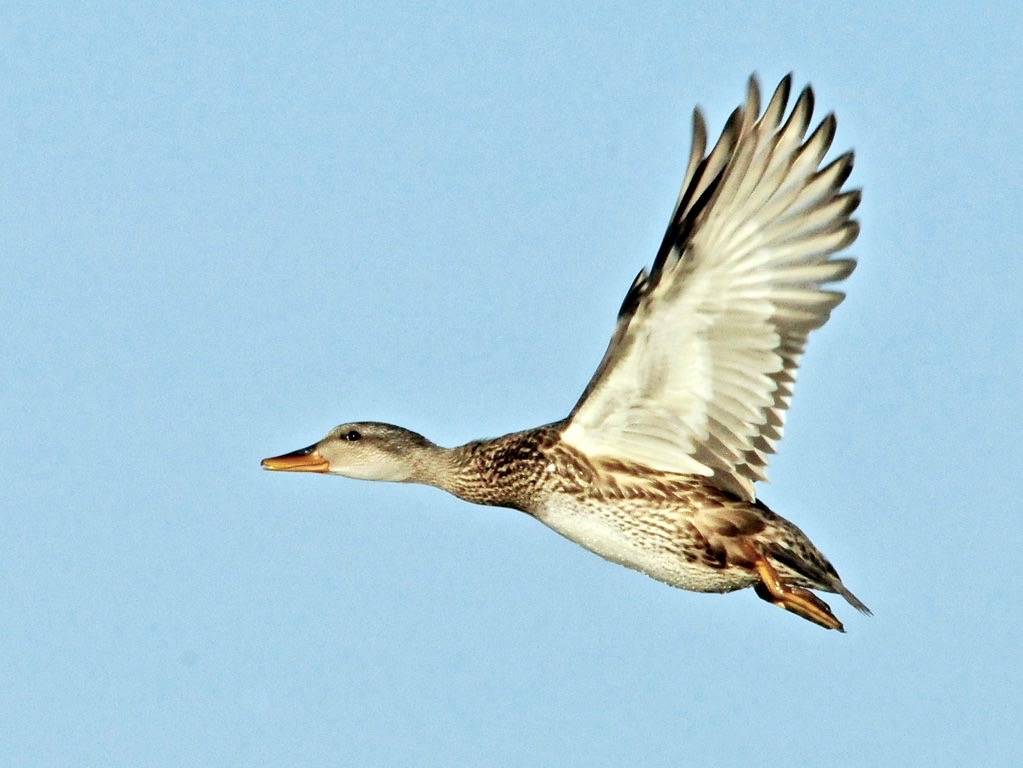
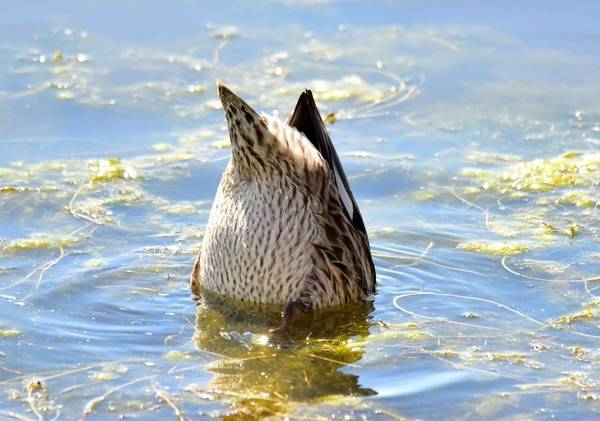

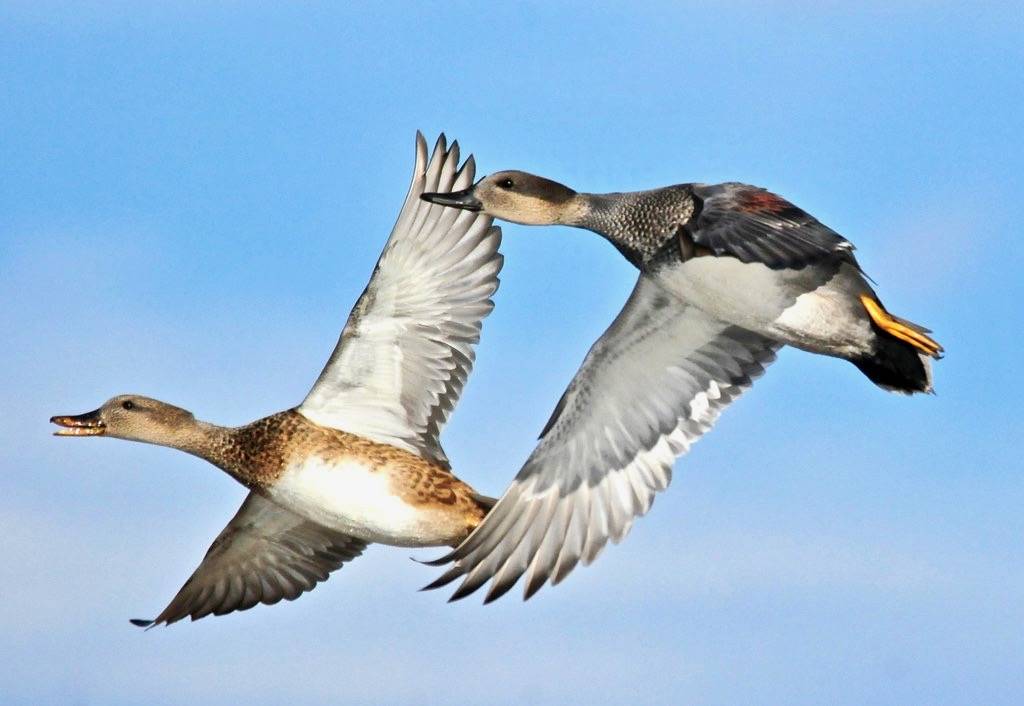
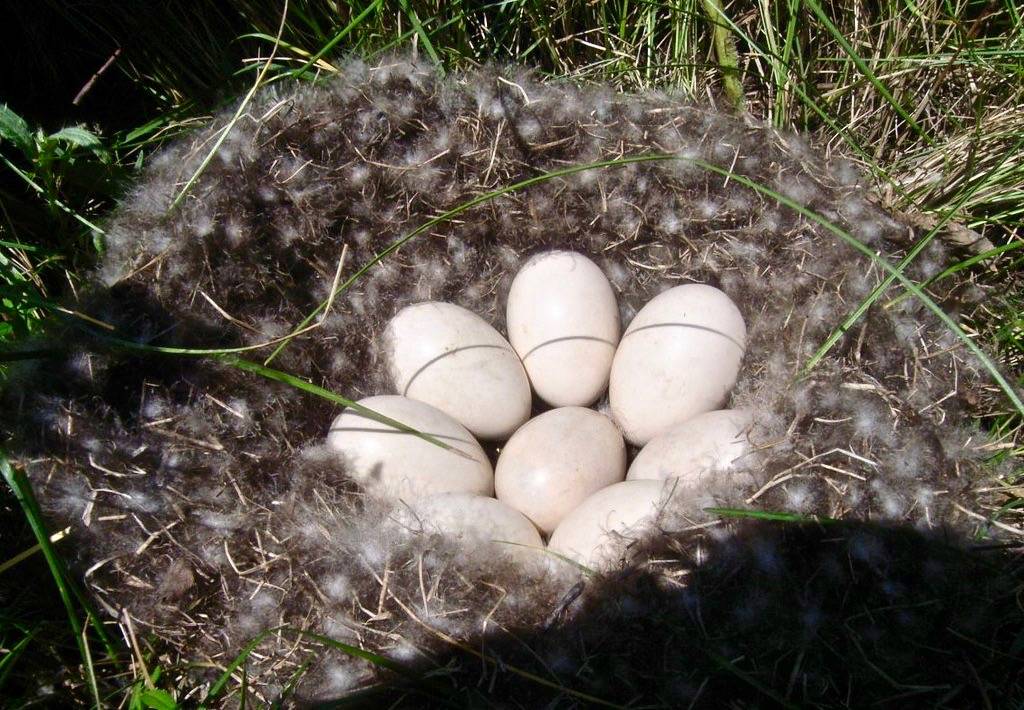
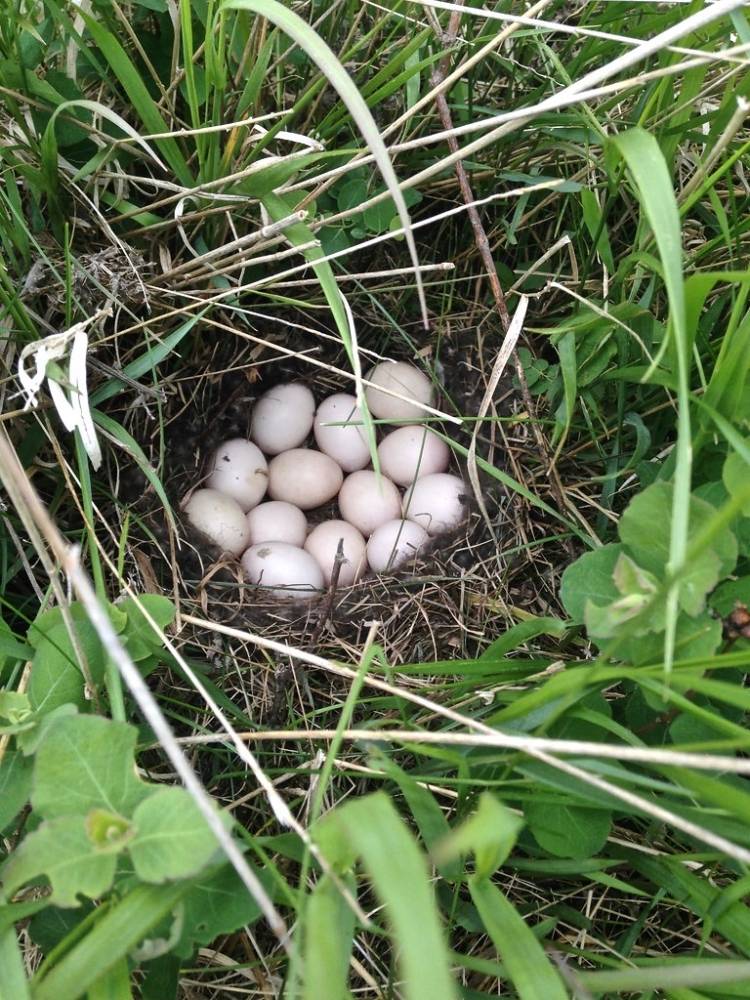
![Gadwall with duckling 2014-06-15_01 [Explored 2014-06-17] by Jan Thomas Landgren is licensed under CC BY-NC-ND 2.0](/_files/public/Bird Galleries/Gadwall/14 Gadwall female with duckling.jpg?w=350?blur=10)
